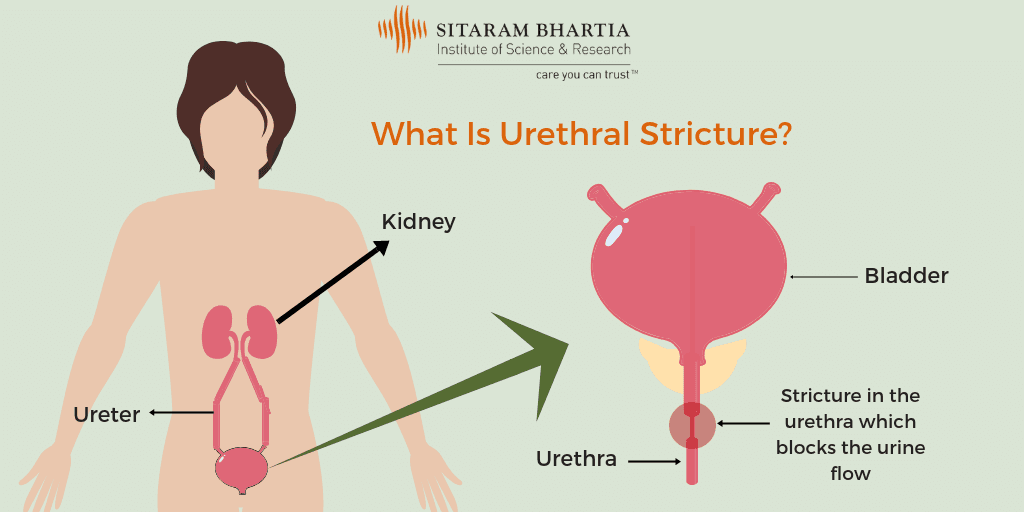Urethral stricture is a medical condition that makes it difficult to pass urine smoothly. Some people might also feel pain while passing urine.
That’s what Aditya Dahia, a 25-year old professional cyclist went through after a minor cycling accident. He started facing extreme difficulty and pain while urinating. When he did pass urine, it used to come out in two different streams. Spotting this unusual urinary behavior, he shared it with his mother.
His mother decided to take him to Dr. Kartikeya Kohli, consultant at South Delhi’s Sitaram Bhartia Hospital.
Urethral Stricture – How was his condition diagnosed?
Dr. Kartikeya examined him while listening to his symptoms carefully. Based on his symptoms, there were quite a few things which were possible but keeping his young age in mind, Dr. Kartikeya decided to conduct a uroflowmetry first to measure his urine flow rate.
Meanwhile, Dr. Kartikeya asked Aditya some more questions to better understand his condition.
When Aditya mentioned that the symptoms started to appear only after his cycling accident, Dr. Kartikeya urged him to explain it in detail.
“A few days back I participated in a cycling tournament where I was given a brand new bicycle to ride. It’s crossbar, however, was too high for me and I accidentally fell over it hard while cycling. It was very painful,” said Aditya.
Upon hearing how he fell, Dr. Kartikeya suspected a urethral stricture. The uroflowmetry also showed a weakened stream of urine. He then decided to conduct a urethrogram for proper diagnosis.
“Urethrogram is basically an X-Ray performed by using a contrast medium like a dye. The dye allows us to view the urethra clearly,” explained Dr. Kartikeya.
His suspicion was right. The urethrogram revealed a urethral stricture which was causing Aditya to have difficulty in passing urine.
Both Aditya and his mother were unaware of this condition so they asked the doctor about it.
What is a Urethral Stricture?
A scarring that narrows the urethra (tube taking urine from the bladder out of the body) is known as urethral stricture. The stricture prevents smooth passing of urine through the urethra which can lead to a plethora of urinary problems.

If the urethra has been excessively narrowed, the person may become unable to pass urine at all. This causes acute urinary retention (urine gets stored in the bladder).
“This can later lead to bladder or kidney damage so we treat it as a medical emergency,” said Dr. Kartikeya.
“Is urethral stricture in females possible?” Aditya’s mother asked out of curiosity.
“Yes it is but urethral stricture is more common in men than in women. Men have a longer urethra as compared to women which makes them more prone to the condition,”said Dr. Kartikeya.
What are the symptoms of a urethral stricture?
If you have a urinary stricture you may experience –
- Difficulty in passing urine
- Pain while urinating
- Spraying of urine stream (urine comes out in two different directions)
- Poor or decreased urine flow
- Inability to empty bladder completely
- Recurrent UTI (Urinary Tract Infection)
When Aditya got to know what it means he asked, “how is my condition connected to the accident I had a few days back?”
What causes Urethral Stricture?
The cause of urethral stricture is often unknown but it mostly happens due to one of the following reasons –
- ‘Straddle injuries’ like hurting oneself by falling onto a crossbar like that of a bicycle
- Any injury from pelvic fracture or automobile accident
- Medical trauma from using a catheter for too long
- Sexually transmitted infections
- Can sometimes also occur after prostate or kidney stone surgery
Aditya now knew why his symptoms appeared only after the cycling accident.
“How do you treat a urethral stricture?” was the next question Aditya asked the doctor.
What is the treatment for Urethral Stricture?
“The main aim of urethral stricture treatment is to relieve the patient of his symptoms and reduce the risk of the stricture returning,” remarked Dr. Kartikeya.
The type of treatment most suited for a person with urethral stricture depends on how it’s caused and the extent to which the urethra is blocked by the stricture.
On performing a urethrogram, it was found that Aditya’s stricture was not severe. Dr Kartikeya decided to conduct a urethral dilation.
“In this procedure, while the patient is under the influence of anesthesia, a plastic dilator is passed into the urethra to open up the narrowed part. After the procedure is done, the patient is good to go but before that he is taught how to pass a similar dilator into his urethra on his own. This is known as Intermittent Self-Dilatation.”
But this is only a temporary solution to open up the urethra. There’s always a high risk of the stricture returning after this treatment. Hence, the doctor often has to perform dilatation from time to time.
For a more severe form of stricture, a permanent solution is Urethroplasty.
“This is a complex surgery which completely removes the scarred part of the urethra and hence, prevents it from coming back.”
Another minimally invasive treatment is the Optical Internal Urethrotomy (OIU) in which a telescope is passed through the urethra to cut open the stricture. A bladder catheter is used to let it heal slowly.
What are the consequences of not getting Urethral Stricture treated?
To this, Dr. Kartikeya replied, “Urethral stricture leads to a weakened stream of urine so there are chances that you are not able to empty your bladder completely. The stricture is acting as a plug stopping the flow of urine. This can lead to urinary retention in the bladder which can in turn lead to serious infections in your kidneys, bladder or prostate.”
“I always advise my patients to get the stricture treated as soon as it is diagnosed.”
Aditya’s mother didn’t want to take any chances and once they completely understood the procedure, they decided it was best not to delay it.
Thankfully, the procedure went well and Aditya was feeling much better. He was able to urinate without any pain and he also retained his urinary flow.
“I’m glad we sought medical assistance for Aditya’s symptoms as soon as possible. I’ll make sure he takes extra care while cycling or doing any other kind of physical activity,” said Aditya’s mother.


